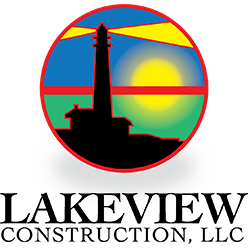Well-designed metal ductwork is crucial for managing airflow and maintaining good indoor air quality in modern buildings. However, the intricate planning and execution of duct systems requires in-depth mechanical engineering knowledge and adherence to strict HVAC codes and standards. This article will explore key considerations, energy efficiency opportunities, fabrication best practices, and the importance of specialized Metal Duct Design training for engineers on duct system implementation.
What Does a Proper Metal Duct System Look Like?
Before diving into the key design details, it’s important to understand what comprises a complete metal duct system. This includes the core ductwork and many ancillary components required for adjusting, distributing, and venting airflows throughout the intended spaces.
Ductwork Materials
The ductwork typically consists of sheet metal components fabricated from galvanized steel or aluminum. The gauge, or thickness, of the specified duct materials impacts the structural integrity to resist pressure changes and air leakage.
Supporting Components
In addition to the main duct runs transferring air to diffusers, properly engineered systems include volume control dampers, turning vanes, access doors, support hangers, and insulation. Fire dampers and smoke detectors may also be mandated.
Air Distribution Devices
The ductwork connects to vents, grilles, diffusers, and other terminals that distribute supply air or return air from a room to the HVAC equipment. Especially in commercial buildings, many types of air devices are used for directional control.
Ventilation Equipment
The central heating and cooling equipment – like AHUs or RTUs – tie into the duct system to force conditioned air to desired setpoints for occupant comfort. Humidity control may also be integrated.
Thoughtful design and seamless integration of all these metal duct system components are imperative for efficiency and indoor environmental quality.
Key Factors in Metal Duct System Design
Experienced mechanical engineers must balance many important considerations when planning out ductwork. Here are some of the most crucial facets.
Airflow and Ventilation Requirements
The first fundamental step is determining airflow rates in CFM (cubic feet per minute) required for each space based on occupant density, activities, outdoor air changes, and targeted air circulation patterns. Duct sizing must match equipment capabilities and demands.
Allowable Pressure Drops
Lengthy or convoluted duct runs increase resistance and static pressure losses. Checking allowable pressure drops through various routing scenarios prevents air movement deficiencies or excessive fan energy use.
Structural Support Needs
Ductwork must be properly suspended or supported vertically and horizontally per code requirements. Sections spanning open areas require cross-bracing for seismic stability. Support spacing depends on metal thickness.
Integration With Other Building Systems
Duct routes must account for physical obstructions like beams, piping, electrical gear, or other structural components. Coordination with architects, contractors, and other trades is imperative.
Fabrication and Installation Considerations
The duct construction methods, whether shop fabricated or field fit, impact the achievable configurations and connections between duct sections or fittings. Straight sections should be maximized.
Mitigating Potential Issues
Engineers must also budget for including dampers to balance flows, access doors for maintenance, volume control boxes to regulate airflow and insulation or lining installation provisions.
Careful evaluation of all these duct system dynamics is imperative – and where specialized Metal Duct Design training can greatly assist mechanical HVAC engineers.
Designing Metal Duct Systems for Energy Efficiency
With building energy consumption under increased scrutiny, HVAC ductwork design choices can play a major role in controlling operational costs. Here are key efficiency considerations.
Minimize Duct Static Pressure Losses
Increased turbulence from convoluted duct routing, restrictive fittings, or undersized ducts leads to higher static pressure losses. This requires more fan power to move the air. Optimized straight duct runs are the most efficient.
Ensure Adequate Ductwork Insulation
Uninsulated ducts lose energy through the heat conduction to the cooler surrounding air. Adequate exterior duct insulation maintains carried air temperatures for space conditioning efficiency. Vapor barriers prevent moisture issues.
Implement Volume Control Dampers
Regulating airflow rates to occupied zones prevents over-cooling or overheating when spaces have varying demands. Volume control dampers matched to sensors save energy.
Carry Out Ductwork Air Leakage Testing
Sealing compromised duct joints is crucial. Pressurization testing followed by sealant application identifies problem leakage areas that should be addressed to prevent efficiency losses.
Right-Size Equipment Capacities
Oversized or incorrectly specified HVAC equipment can lead to simultaneous heating and cooling cycles or excessive humidity. Sizing equipment capacities to realistic duct airflow rates ensures efficient matching.
Thoughtful ductwork design measures like those above offer major potential efficiency improvements for building energy use.
Metal Duct Fabrication and Installation Best Practices
To fulfill the intended duct system layout developed by mechanical engineers, sheet metal specialists must employ artistry best practices in transforming duct design plans into reality:
Quality Materials Selection
Galvanized steel or aluminum sheet metal ordered must match the thickness specified in drawings for duct section strength and durability. Materials certification should be requested from metal suppliers.
Precision Fabrication
Experienced metal fabrication shops use precision equipment to cut measured rectangular or round duct sections with locked seams and welded fittings for superior longevity compared with field fabrication.
Shop vs. Field Assembly
Maximizing shop fabrication with consistent quality welds and joints speeds installation. Field assembly from pre-made fittings allows some on-site route adjustments but risks air leakage without expertise. Special training focused specifically on quality metal duct fabrication fundamentals can give in-house or third-party sheet metal teams a knowledge edge to produce superior finished ductwork.
Securing Duct Suspension
Load-rated hangers must securely support duct sections horizontally and vertically at code-required intervals based on duct dimensions and metal thickness. Seismic bracing provides stability.
Sealing Duct Joints
To achieve air-tightness, all duct mating surfaces should be sealed with approved HVAC duct sealants like mastic. Pressurized leakage testing verifies integrity. Any identified leaks must be resealed.
Insulation and Lining
Clean duct surfaces must be prepared for applying insulation wraps with facing or internal acoustic lining materials according to product specifications without gaps that allow condensation or convection losses.
Implementing these fundamental quality measures for metal ductwork fabrication and installation goes a long way toward achieving HVAC system performance objectives defined by the overall duct routing layout.
Why Specialized Metal Duct Training is Key
Designing the intricacies of duct system layouts, fabricating sheet metal to exacting tolerances and standards, and piecing together a structurally sound finished product requires specialized expertise around the unique requirements and best practices for metal ductwork implementation.
Navigating Complex Standards
Various associations like ASHRAE, SMACNA, and NFPA provide extensive mechanical codes and duct construction standards that engineers must know extensively. Specialized training programs offer focused instruction on interpreting and applying these intricate industry guidelines.
Real-World Duct Design Nuances
Each building project presents unique demands for structural integration, matching equipment, and overcoming challenges with duct routing aesthetics versus function. Scenario-based duct system design training leverages experienced instructor guidance.
Fabrication and QA Expertise
Proper sheet metal duct fabrication requires select tools, material understanding, and quality assurance adherence from hands-on trade experience—dedicated metal working courses speed skill building.
Preparing for Certification Tests
Many key HVAC roles require demonstrated competency through testing like NATE, NEBB, and TAB certifications. Relevant duct system design training curriculums incorporated into prep testing help ensure success for these career-advancing exams.
The specialized skills needed for functional, efficient, and structurally sound metal duct system implementation make a compelling case for supplemental technical training, even for seasoned mechanical engineering veterans.
Conclusion
This overview covers many key facets of metal ductwork system design, energy efficiency, fabrication quality, and the merits of targeted Metal Duct Design training for HVAC professionals. Properly transferring conditioned air to building spaces is a challenging feat. Mastering the interplay of airflows, pressures, routing layout, materials selection, and construction quality standards requires dedication to continuous learning and advancement. Engineers, designers, and metal fabrication trades alike can benefit from formalized technical ductwork courses to optimize their skill sets for tackling duct system challenges inherent in new projects.




























